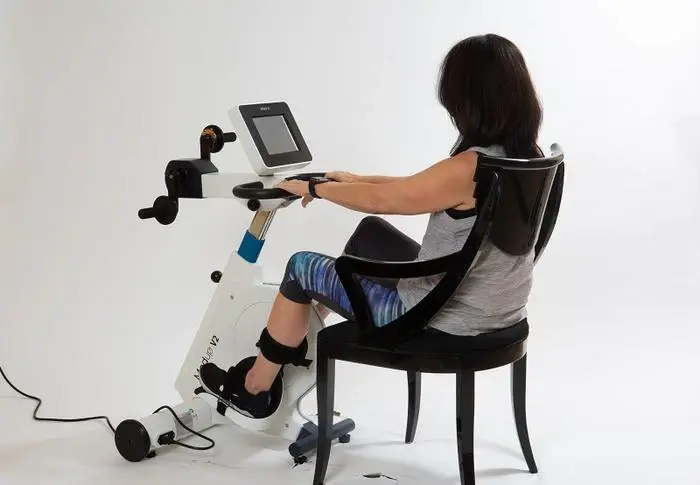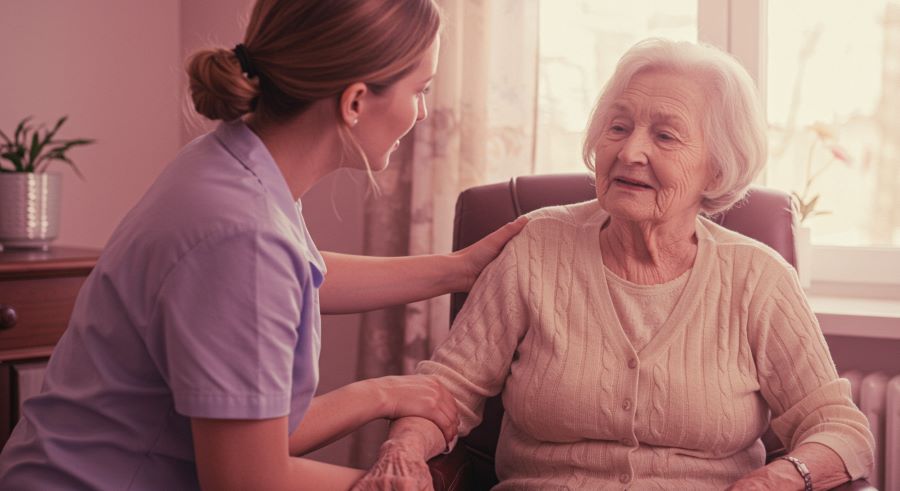For individuals living with neuromuscular disorders, managing symptoms like spasticity, muscle stiffness, and poor circulation is an ongoing challenge. Conditions such as multiple sclerosis (MS), cerebral palsy, spinal cord injuries, and post-stroke impairments often result in muscle tightness and involuntary contractions that can affect mobility, comfort, and overall quality of life.
One effective approach to managing these symptoms is passive-active movement therapy, which combines assisted movement with voluntary engagement to promote flexibility, improve blood flow, and reduce muscle tension. In this article, we’ll explore how passive-active cycling therapy helps individuals with neuromuscular disorders achieve greater comfort, mobility, and well-being.
1. What Causes Spasticity and Poor Circulation?
Spasticity occurs when damaged nerve pathways in the brain or spinal cord send incorrect signals to the muscles, causing tightness, rigidity, and involuntary spasms. This is common in neurological conditions such as:
- Multiple sclerosis (MS) – Causes disruptions in nerve signals, leading to unpredictable muscle stiffness.
- Cerebral palsy – Affects muscle control and movement due to early brain development issues.
- Spinal cord injuries – Damage to the spinal cord can disrupt communication between the brain and muscles.
- Stroke – Can lead to weakness or spasticity in one side of the body due to brain damage.
Poor circulation is another challenge, as reduced movement limits blood flow to the muscles, leading to swelling, discomfort, and an increased risk of blood clots.
2. How Passive-Active Movement Therapy Helps
Passive-active movement therapy offers a two-part approach to symptom management:
- Passive movement: The legs or arms are moved by an external force (such as a motorized device), helping loosen tight muscles and improve circulation.
- Active movement: The individual gradually engages their muscles to pedal or move, helping strengthen weak areas and regain control.
“Devices like the MedUp V2 Active-Passive Cycle Trainer provide a controlled way for individuals with neuromuscular disorders to reduce spasticity and improve circulation, even if they have limited voluntary movement.”
Key Benefits of Passive-Active Movement Therapy
- Reduces Spasticity: Regular movement helps relax tense muscles and decrease involuntary contractions.
- Improves Circulation: Enhances blood flow to the extremities, reducing swelling and preventing clot formation.
- Enhances Muscle Flexibility: Prevents joints from stiffening, improving range of motion.
- Boosts Neuroplasticity: Encourages brain-muscle connection, supporting rehabilitation and movement control.
3. Who Can Benefit from This Therapy?

Passive-active cycling therapy is particularly beneficial for:
- Individuals with multiple sclerosis – Helps reduce muscle tightness and improves lower limb function.
- Stroke survivors – Aids in regaining muscle control and preventing muscle atrophy.
- People with cerebral palsy – Supports flexibility and reduces contractures.
- Individuals with spinal cord injuries – Helps maintain circulation and prevent secondary complications from immobility.
4. How to Incorporate Passive-Active Movement into a Daily Routine
For best results, consistency is key. Here’s how to integrate passive-active therapy into a regular routine:
- Start with Passive Sessions: Allow the machine to guide movement to gently loosen stiff muscles.
- Gradually Engage in Active Participation: As muscles relax, try to contribute to the motion voluntarily.
- Increase Session Length Over Time: Start with 10–15 minutes and gradually build up to 30+ minutes.
- Use in Combination with Other Therapies: Pair with stretching, physical therapy, or aqua therapy for a more comprehensive approach.
Commit to Improving Spasticity for Better Health
For individuals with neuromuscular disorders, managing spasticity and circulation issues is crucial for maintaining mobility and comfort. Passive-active movement therapy offers a safe, effective way to promote relaxation, improve blood flow, and support rehabilitation goals.
By integrating movement therapy into a consistent daily routine, individuals can experience better flexibility, reduced muscle stiffness, and improved overall well-being—helping them regain a sense of independence and control over their mobility.
Facebook Post:
Reduce spasticity and improve circulation with movement therapy!
For individuals with neuromuscular disorders, managing muscle stiffness and poor circulation is a daily challenge. Passive-active cycling therapy provides gentle movement that reduces muscle tension, improves flexibility, and enhances blood flow—helping with mobility and comfort.
Have you tried movement therapy as part of your recovery? Let us know in the comments!
#NeuromuscularRecovery #MovementTherapy #ReduceSpasticity #ImproveCirculation #PhysicalTherapy #MedUpBike
